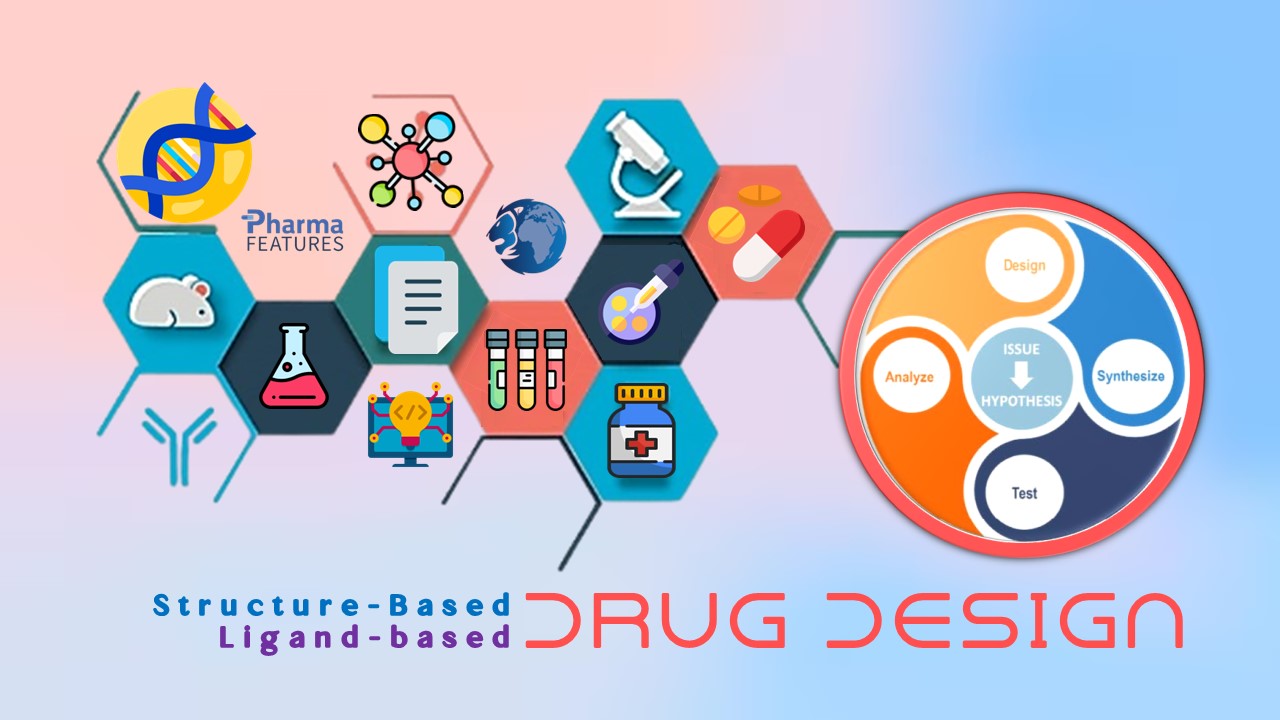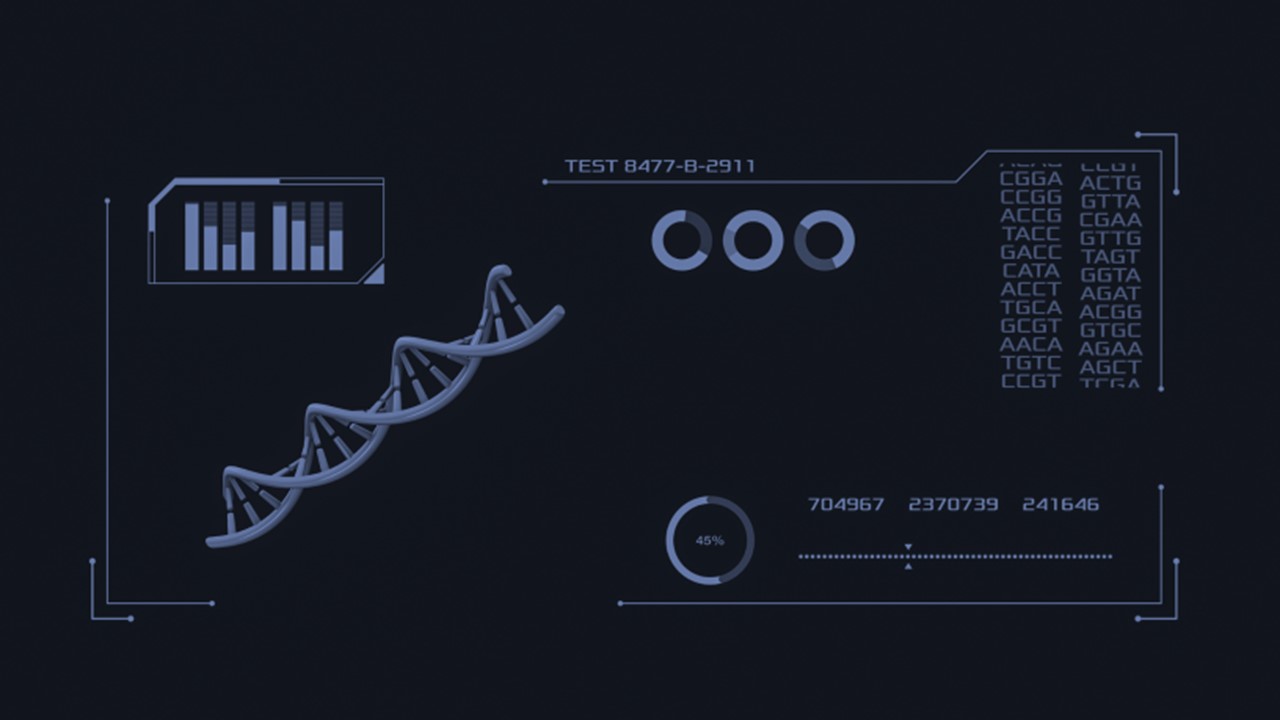Multi-omics approaches represent a powerful tool in unraveling the intricate web of genetic variation and its implications for precision health. Traditional genomics, which focuses on deciphering an individual’s genetic code, has been tremendously informative in identifying genetic variants associated with various diseases. However, it only scratches the surface of the genetic landscape. Multi-omics takes genomics a step further by integrating it with other ‘omics data, such as epigenomics, transcriptomics, proteomics, and metabolomics. This holistic approach provides a comprehensive understanding of how genetic variations influence epigenetic modifications, gene expression, protein function, and metabolite profiles, ultimately shaping an individual’s health and susceptibility to diseases. By elucidating these complex interactions, multi-omics empowers researchers and healthcare providers to develop more precise and personalized interventions tailored to an individual’s unique genetic makeup.
Cardio-Metabolic Diseases: Unearthing Molecular Mechanisms for Targeted Interventions
Cardio-metabolic diseases, which encompass a spectrum of conditions including heart diseases, diabetes, and obesity, have emerged as global epidemics, imposing a significant burden on public health systems and individuals alike. In the face of these pervasive health challenges, the application of multi-omics approaches represents a groundbreaking paradigm shift. Deep phenotyping through multi-omics not only provides a transformative lens but also unlocks a treasure trove of molecular insights into the complex underpinnings of these diseases.
Elucidating Cardiometabolic Pathophysiology
Traditional approaches to understanding and managing cardio-metabolic diseases have undoubtedly yielded valuable knowledge. They have identified risk factors, diagnostic markers, and therapeutic targets that have played crucial roles in disease management. However, these approaches often scratch the surface, offering a somewhat simplistic view of the intricate web of factors that contribute to disease development and progression.
Multi-omics, on the other hand, delves deep into the molecular intricacies of cardio-metabolic diseases, akin to peeling back the layers of an intricate biological puzzle. It goes beyond merely identifying risk factors; it aims to elucidate the entire orchestra of molecular players involved in orchestrating these diseases. Here’s how multi-omics revolutionizes our understanding:
Genetic Predisposition: Multi-omics incorporates genomic data, shedding light on an individual’s genetic predisposition to cardio-metabolic diseases. It identifies genetic variations that may increase susceptibility to these conditions. This insight enables healthcare professionals to tailor prevention and intervention strategies based on an individual’s genetic profile.
Epigenetic Modifications: Epigenetics, a crucial layer of molecular regulation, is brought into focus. Multi-omics captures epigenetic modifications, such as DNA methylation and histone modifications, which can influence gene expression and contribute to disease risk. Understanding these modifications provides a deeper understanding of how environmental factors can impact disease development.
Gene Expression Dynamics: Transcriptomics within multi-omics unveils the dynamic world of gene expression. It identifies genes that are overexpressed or underexpressed in cardio-metabolic diseases, pinpointing key molecular players. This knowledge goes beyond static genetic information and reveals the active contributors to disease processes.
Protein Dysregulation: The proteomic component of multi-omics explores the realm of proteins, which are the workhorses of biological function. It identifies alterations in protein levels and post-translational modifications that may disrupt cellular processes. Understanding these changes can highlight potential therapeutic targets.
Metabolite Imbalances: Metabolomics, another facet of multi-omics, examines the small molecules and metabolites involved in cellular metabolism. It identifies imbalances that may be indicative of disease states or metabolic dysfunction. These insights can inform dietary recommendations and personalized interventions.
Precision Tools for Precision Health
By integrating these multi-omics datasets, healthcare professionals gain a comprehensive, 360-degree view of cardio-metabolic diseases. They no longer view these conditions through a narrow lens but rather through a panoramic understanding of the intricate molecular interactions at play. Armed with this knowledge, healthcare providers can develop a new arsenal of precision tools:
Targeted Interventions: Multi-omics allows for the identification of precise molecular targets for therapeutic intervention. Instead of employing one-size-fits-all treatments, therapies can be tailored to address the specific molecular drivers of a patient’s condition.
Personalized Lifestyle Recommendations: Understanding an individual’s genetic and molecular predisposition to cardio-metabolic diseases enables the creation of highly personalized lifestyle recommendations. Patients can receive guidance on diet, exercise, and other lifestyle factors that specifically target their unique risk factors.
Therapeutic Strategies: The deeper understanding of molecular mechanisms facilitates the development of novel therapeutic strategies. These may include medications that target specific proteins or metabolic pathways identified through multi-omics analysis.
Early Intervention: Multi-omics can detect molecular changes associated with disease well before clinical symptoms manifest. This early warning system allows for proactive and preventive measures, potentially averting the full-blown onset of disease.
Monitoring Disease Progression: Multi-omics can track disease progression in real time by monitoring molecular changes. This enables healthcare providers to adjust treatment strategies as needed, ensuring that interventions remain effective.
Indubitably, multi-omics equips healthcare professionals with a powerful set of precision medicine tools that transcend the limitations of traditional approaches. It empowers them to tackle cardio-metabolic diseases at their molecular roots, offering patients a more hopeful and personalized path toward improved outcomes and better overall health.
Oncology: Personalizing the Battle Against Cancer
Cancer, for decades, has stood as a formidable and enigmatic adversary within the realm of healthcare. Its heterogeneity, adaptability, and complex biology have posed significant challenges to both diagnosis and treatment. However, in recent years, a revolutionary force has emerged in the field of oncology—multi-omics approaches. These comprehensive methodologies are progressively reshaping our understanding of cancer, offering unprecedented insights into its intricate biology, and fundamentally altering the landscape of cancer diagnosis, prognosis, and management.
The Multi-omic Approach Against Cancer
Multi-omics, as applied to oncology, constitutes a multidimensional toolbox, each facet providing a unique perspective on the disease:
Genomics: At the heart of multi-omics lies genomics, which scrutinizes the genetic blueprint of cancer. By sequencing the DNA of tumor cells, genomics identifies specific mutations and genetic aberrations responsible for initiating and driving cancer. This insight is pivotal in characterizing the molecular basis of the disease and distinguishing subtypes of cancer.
Epigenomics: Epigenetics adds an intricate layer to the cancer puzzle. Epigenomic data exposes the epigenetic alterations that can silence or activate critical genes involved in cancer development and progression. These modifications, such as DNA methylation and histone modifications, exert profound control over gene expression and contribute significantly to cancer biology.
Transcriptomics: Within the multi-omics arsenal, transcriptomics offers a dynamic view of cancer biology. It unveils the gene expression patterns within cancer cells, elucidating which genes are actively producing RNA and thus playing a role in tumorigenesis. Transcriptomic data not only reveals the genes at the core of cancer but also provides insights into the cellular processes that are dysregulated.
Proteomics: Proteomics takes us closer to the functional aspects of cancer. It delves into the world of proteins, which are the effectors of cellular processes. Proteomic analysis identifies alterations in protein levels and post-translational modifications, shedding light on the proteins that drive cancer pathways and signaling networks.
Metabolomics: Completing the multi-omics ensemble, metabolomics explores the metabolic landscape of cancer cells. It investigates the small molecules and metabolites involved in cellular metabolism. These metabolites serve as the fuel for tumor growth and can reveal distinctive metabolic profiles associated with different cancer types.
Integrative Prowess Leveraged Against Tumorigenesis and For Oncotherapeutics
The transformative power of multi-omics in oncology becomes evident when these datasets are seamlessly integrated. The synergy between genomics, epigenomics, transcriptomics, proteomics, and metabolomics empowers oncologists in numerous ways:
Precise Therapeutic Targets: By identifying the specific mutations, epigenetic changes, and altered gene expression patterns driving a particular cancer, multi-omics enables the identification of precise therapeutic targets. These targets serve as the linchpins for developing tailored treatment strategies.
Predicting Treatment Responses: Multi-omics can predict how an individual cancer patient will respond to different treatments. By analyzing the molecular profile of a tumor, oncologists can anticipate whether a specific therapy is likely to be effective or if alternative approaches should be considered.
Customized Treatment Regimens: Perhaps the most revolutionary aspect of multi-omics in oncology is the ability to customize treatment regimens for individual patients. No longer is cancer treatment a one-size-fits-all approach. Instead, therapies can be fine-tuned to address the unique molecular characteristics of each patient’s cancer, maximizing effectiveness while minimizing side effects.
Early Intervention: Multi-omics can detect molecular changes associated with cancer well before clinical symptoms manifest. This early detection capability opens doors to interventions at earlier stages of the disease, potentially improving outcomes and survival rates.
As multi-omics continues to advance, it holds the promise of not only transforming how we understand cancer but also how we conquer it, offering new hope to patients and revolutionizing the landscape of cancer care. The future of oncology is undeniably multi-omic, and its potential to alleviate the burden of cancer is nothing short of extraordinary.
Infectious Diseases: A Key Role in Host-Microbe Dynamics
In the arena of infectious diseases, where pathogens engage in a complex and often deadly dance with their host organisms, multi-omics approaches have emerged as indispensable tools in unraveling the intricacies of these interactions. Infectious diseases, caused by various pathogens such as bacteria, viruses, fungi, and parasites, have long posed significant threats to public health. Understanding how these pathogens interact with their hosts, evade immune responses, and adapt to different microenvironments is paramount for effective disease management and the development of targeted interventions. In this context, multi-omics is a transformative force, shedding light on the molecular underpinnings of infectious diseases and revolutionizing our approach to prevention, diagnosis, and treatment.
Here’s how multi-omics is instrumental in deciphering the complex interplay between hosts and microbes in the context of infectious diseases:
Comprehensive Molecular Profiling: Multi-omics enables researchers to capture a comprehensive molecular profile of both the host and the pathogen. It goes beyond traditional microbiological and immunological approaches by simultaneously examining multiple layers of biological information, including genomics, transcriptomics, proteomics, and metabolomics. This holistic view allows for a deeper understanding of the molecular changes that occur during infection.
Early Detection of Infections: Multi-omics plays a crucial role in the early detection of infections. By analyzing the omics data of the host, specific biomarkers associated with infection can be identified. These biomarkers serve as early warning signals, enabling healthcare providers to initiate timely interventions before clinical symptoms become apparent. Early detection is particularly vital in controlling the spread of infectious diseases.
Pathogen Genomics: The genomics of pathogens, including bacteria and viruses, can be elucidated through multi-omics techniques. This information is invaluable for understanding the genetic variations within pathogen populations. It can reveal critical insights into virulence factors, drug resistance mechanisms, and the potential for host adaptation. Armed with this knowledge, researchers can develop more effective antimicrobial strategies and drug therapies.
Personalized Treatment Strategies: Multi-omics can guide the development of personalized treatment strategies for infectious diseases. By analyzing the molecular characteristics of both the host and the pathogen, it becomes possible to predict individual responses to antimicrobial agents and immunotherapies. Tailored treatments maximize effectiveness while minimizing the risk of adverse effects, enhancing patient outcomes.
Understanding Immune Responses: Multi-omics can provide a detailed view of the host’s immune responses during infection. This includes the activation of immune cells, the release of cytokines and chemokines, and the modulation of immune pathways. Such insights are essential for designing immunotherapies and vaccines that bolster the host’s defense mechanisms against the pathogen.
Public Health Interventions: Multi-omics data can inform public health interventions aimed at controlling the spread of infectious diseases. By tracking the molecular characteristics of pathogens and their hosts, researchers can monitor the transmission dynamics, identify potential reservoirs, and develop targeted containment strategies.
In essence, multi-omics empowers healthcare providers and researchers to unravel the intricate host-microbe interactions at the molecular level. This deep understanding, in turn, facilitates the development of interventions that are not only timely but also precisely matched to the unique characteristics of the infection.
Organ Transplantation: Navigating the Complex Terrain of Graft Health
Organ transplantation stands as one of the most remarkable achievements in modern medicine, offering a lifeline to individuals with failing organs. However, the success of organ transplantation hinges on a delicate and intricate dance between donor and recipient, where factors like immune responses, tissue compatibility, and graft health play pivotal roles. In this intricate ballet of biology, multi-omics emerges as a beacon of hope, illuminating the path to improved transplant outcomes and personalized care.
Here’s how multi-omics plays a transformative role in the field of organ transplantation:
Comprehensive Monitoring: Multi-omics enables clinicians and transplant teams to comprehensively monitor the molecular landscape of both the host (recipient) and the transplanted organ. This holistic view encompasses genomics, transcriptomics, proteomics, and metabolomics data. By continuously assessing these molecular profiles, healthcare providers gain real-time insights into the health and functioning of the graft and the recipient’s response.
Early Detection of Graft Rejection: One of the most critical aspects of successful organ transplantation is the early detection of graft rejection. Multi-omics excels in this regard by identifying specific molecular markers that serve as early indicators of immune system activation or tissue damage. These markers provide invaluable clues about the impending rejection, allowing for timely interventions to prevent graft failure.
Personalized Immunosuppressive Strategies: Multi-omics facilitates the personalization of immunosuppressive strategies for transplant recipients. It achieves this by analyzing the molecular characteristics of both the host and the graft. With this information, clinicians can tailor the immunosuppressive regimen to each patient’s unique profile. The goal is to strike the right balance: preventing rejection while minimizing the risk of infections and other side effects associated with immunosuppression.
Monitoring Graft Health: Multi-omics provides a window into the health of the transplanted organ. By tracking changes in gene expression, protein levels, and metabolite profiles, healthcare providers can assess the graft’s functioning and detect any deviations from the norm. Early identification of graft dysfunction or complications allows for prompt intervention and potential salvage of the transplant.
Optimizing Long-Term Outcomes: The use of multi-omics in organ transplantation has the potential to significantly improve long-term outcomes for patients. By enhancing the precision and timeliness of interventions, multi-omics reduces the likelihood of graft failure and complications. This, in turn, can lead to extended graft survival and improved quality of life for transplant recipients.
Reducing Healthcare Costs: Timely interventions driven by multi-omics data can have a positive impact on healthcare economics. By preventing graft failure and the need for retransplantation, multi-omics contributes to cost savings in the long run. Moreover, personalized immunosuppression may reduce the occurrence of adverse effects and complications, further reducing healthcare expenditures.
Through its real-time insights into graft health and immune responses, multi-omics elevates the precision of organ transplantation, ultimately increasing the chances of successful transplantation and improving the long-term prospects and quality of life for transplant recipients. As our understanding of multi-omics continues to evolve, it holds the promise of further enhancing the field of organ transplantation and offering renewed hope to those in need of life-saving transplants.
Pregnancy: Safeguarding the Health of Mother and Fetus
Precision health in pregnancy is a critical endeavor that involves safeguarding the well-being of both the mother and the fetus. Multi-omics data plays a pivotal role in achieving this goal by providing a holistic view of the molecular dynamics during pregnancy. By monitoring genetic variations, epigenetic changes, transcriptomic profiles, and metabolic shifts in both the mother and the developing fetus, healthcare providers can detect potential complications early. For instance, multi-omics can identify genetic risk factors for gestational diseases, such as preeclampsia or gestational diabetes. It can also shed light on the molecular mechanisms underlying fetal development and growth. Armed with this comprehensive knowledge, clinicians can tailor prenatal care, nutritional recommendations, and intervention strategies to the specific molecular characteristics of each pregnancy, ensuring the best possible outcomes for both mother and child.
Longevity & Aging: The Secrets to a Longer and Healthier Life
The quest for longevity and healthy aging has fascinated humanity for centuries. In this pursuit, multi-omics emerges as a valuable ally, helping unravel the intricate factors that contribute to extended lifespan and well-being in older age. By analyzing the molecular signatures associated with longevity, multi-omics data can provide insights into the genetic, epigenetic, and metabolic determinants of healthy aging. It allows researchers to identify biomarkers that correlate with reduced age-related diseases and enhanced vitality. Furthermore, multi-omics enables the exploration of lifestyle interventions, dietary choices, and therapeutic strategies that promote healthy aging by targeting specific molecular pathways. Through a deeper understanding of the molecular underpinnings of longevity and aging, multi-omics empowers individuals to make informed choices that may extend their years of good health, enhancing their quality of life as they grow older.
Multi-omics for a Healthier Future
Multi-omics approaches are catalyzing a revolution in precision health, with applications spanning genetic variation, cardio-metabolic diseases, cancer, infectious diseases, organ transplantation, pregnancy, and longevity/aging. These applications demonstrate the transformative potential of multi-omics in understanding the molecular intricacies of health and disease, paving the way for personalized interventions that can improve patient outcomes and advance our collective pursuit of a healthier future.
Engr. Dex Marco Tiu Guibelondo, B.Sc. Pharm, R.Ph., B.Sc. CpE
Subscribe
to get our
LATEST NEWS
Related Posts

Bioinformatics & Multiomics
Harnessing Computational Ingenuity for Tomorrow’s Therapeutics
Leverage computational power to navigate modern drug design.

Bioinformatics & Multiomics
Exploring Cutting-Edge Techniques in Protein Target Identification
From genetic screens in model organisms to chemical proteomics in mammalian systems, each approach offers unique insights into the complex landscape of drug-target interactions.
Read More Articles
Synthetic Chemistry’s Potential in Deciphering Antimicrobial Peptides
The saga of antimicrobial peptides unfolds as a testament to scientific ingenuity and therapeutic resilience.












